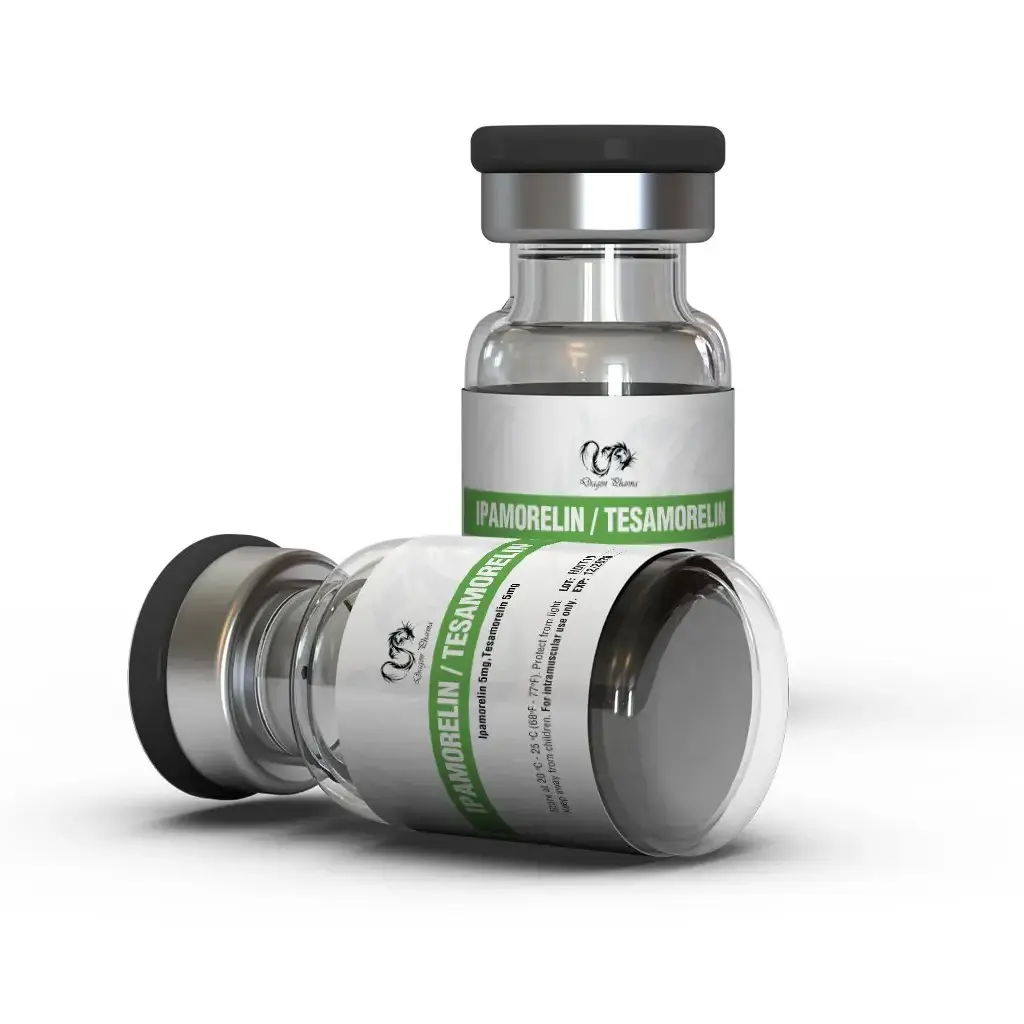


Fabricator: Dragon Pharma, Europe
Unit: x1 vial
Strength: 10 mg
If your order hasn’t arrived within 35 days after shipping, we’ll resend it for free.
When it comes to peptide-based research focused on growth hormone stimulation, metabolism, and recovery, few comparisons are as fascinating as Tesamorelin vs Ipamorelin. Both peptides are designed to enhance the body's natural growth hormone (GH) secretion, yet they operate through very different biological pathways. Researchers and performance scientists are increasingly interested in how these two compounds compare in terms of mechanism, efficacy, and outcomes in clinical and preclinical studies.
This article breaks down their similarities, differences, and research-backed benefits, offering a complete guide to what you can expect when evaluating Tesamorelin and Ipamorelin in experimental contexts.
Growth hormone (GH) plays a vital role in tissue repair, metabolism, and cellular regeneration. Its release is tightly regulated by two main hormones — Growth Hormone-Releasing Hormone (GHRH) and Ghrelin. Tesamorelin mimics the action of GHRH, while Ipamorelin works by stimulating ghrelin receptors. Both pathways ultimately lead to GH secretion, but through distinct mechanisms that affect timing, pulse frequency, and downstream effects.
Tesamorelin is a synthetic peptide analog of the body's natural GHRH. By binding to GHRH receptors in the anterior pituitary gland, it directly stimulates GH release in a pulsatile manner. Originally developed to manage HIV-associated lipodystrophy, Tesamorelin has been extensively researched for its ability to reduce visceral fat, enhance muscle tone, and improve metabolic efficiency.
Tesamorelin works by mimicking GHRH's interaction with pituitary somatotrophs. This promotes endogenous GH release, leading to increased levels of Insulin-Like Growth Factor-1 (IGF-1), which supports protein synthesis, cell regeneration, and fat oxidation.
Ipamorelin belongs to the class of growth hormone secretagogues (GHS). It's a pentapeptide that selectively targets ghrelin receptors (GHSR-1a), signaling the pituitary gland to release GH. Unlike other GHS peptides, Ipamorelin's action is remarkably selective, meaning it doesn't significantly influence other hormones like cortisol or prolactin. This makes it a favorite in research on tissue recovery, muscle preservation, and anti-aging.
Ipamorelin mimics the hunger hormone ghrelin but isolates only its GH-stimulating function. It encourages gradual and sustained GH release, enhancing recovery processes while minimizing hormonal side effects. Its mechanism offers a "clean" profile — perfect for long-term experimental use where hormonal stability is essential.
| Feature | Tesamorelin | Ipamorelin |
|---|---|---|
| Peptide Class | GHRH Analog | Ghrelin Receptor Agonist (GHS) |
| Mechanism | Stimulates GHRH receptors → GH & IGF-1 release | Stimulates ghrelin receptors → GH secretion |
| Main Research Use | Fat metabolism, metabolic enhancement | Tissue repair, muscle recovery |
| Effect on Cortisol | Neutral | Negligible / Non-stimulatory |
| Effect on Fat Mass | Decreases visceral adipose tissue | Supports lean mass preservation |
| GH Pulse Type | Natural pulsatile rhythm | Gentle, prolonged secretion |
| Ideal Research Focus | Metabolic function, fat oxidation, cognition | Muscle repair, recovery, regeneration |
Tesamorelin is highly valued in research exploring metabolism, body composition, and GH deficiencies. Its precise mimicry of natural GHRH makes it useful for studying lipolysis and insulin regulation. Researchers also note promising data in studies involving cognitive health and neuroprotection due to improved mitochondrial efficiency and reduced inflammatory markers.
Ipamorelin's clean GH stimulation profile and minimal hormonal disruption make it a go-to peptide for studies on recovery, musculoskeletal repair, and anti-aging pathways. It is frequently combined with CJC-1295 to emulate the body's own GH rhythm, supporting natural healing without overstimulation.
Some studies explore using Tesamorelin and Ipamorelin together to trigger both GHRH and ghrelin pathways simultaneously. This dual stimulation can create a synergistic GH pulse that more closely mimics the body's natural secretion rhythm. Researchers investigating advanced peptide protocols often combine them to evaluate effects on muscle growth, fat reduction, and recovery response.
Peptides that modulate growth hormone secretion are often evaluated alongside regenerative compounds like TB-500 vs BPC-157, which focus more directly on tissue healing. For weight management-focused studies, researchers often reference Tirzepatide Benefits for Weight Loss: Why Everyone's Talking About It.
Reconstitution commonly involves bacteriostatic water to achieve desired study concentrations.
Form: Lyophilized powder for maximum stability.
Conditions:
Short-term: Refrigerate at 2–8°C.
Long-term: Store at -80°C for extended preservation.
Handling: Avoid freeze-thaw cycles; aliquot for experimental use. Protect from light, air, and moisture.
Solution Stability: Use sterile buffers (pH 5–6); store at 4°C for up to 30 days or freeze for longer periods.
For research purposes only. Not for human use or therapeutic applications.
The Tesamorelin vs Ipamorelin comparison highlights how two GH-stimulating peptides can lead to vastly different research outcomes. Tesamorelin offers precise, pulsatile GH stimulation ideal for studying metabolism and fat reduction. Ipamorelin, on the other hand, provides a more selective, recovery-oriented pathway that supports regeneration and tissue repair. Depending on the research goal—be it metabolic optimization or recovery performance—each peptide offers unique advantages for scientific exploration.
Tesamorelin mimics GHRH and promotes pulsatile GH release, while Ipamorelin stimulates ghrelin receptors to trigger a slower, steady GH increase.
Yes, researchers often study them together to activate both GH pathways for enhanced results in recovery and metabolic efficiency.
Tesamorelin is generally more effective for metabolic and fat reduction models due to its strong lipolytic action and IGF-1 stimulation.
Ipamorelin is preferred for tissue regeneration and muscle recovery research due to its clean receptor selectivity and minimal hormonal interference.
Tesamorelin is FDA-approved for specific medical use (HIV lipodystrophy), while Ipamorelin is for research use only and not approved for human consumption.
Please log in to write Ipamorelin / Tesamorelin 10mg review.